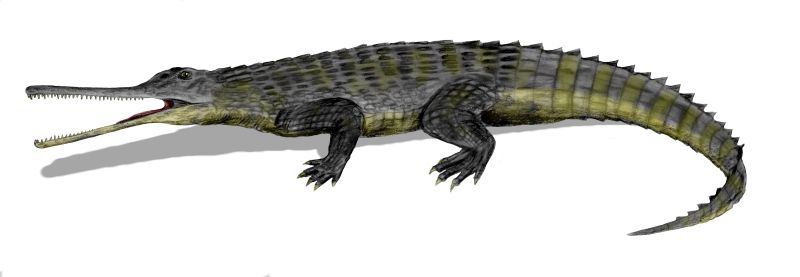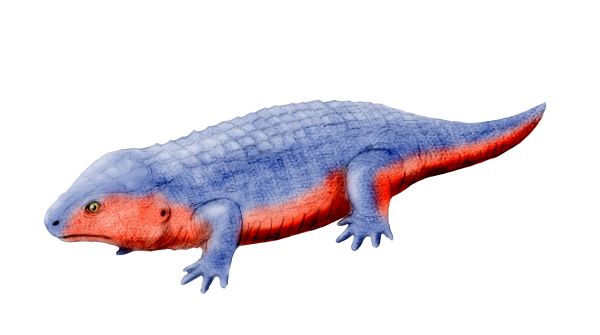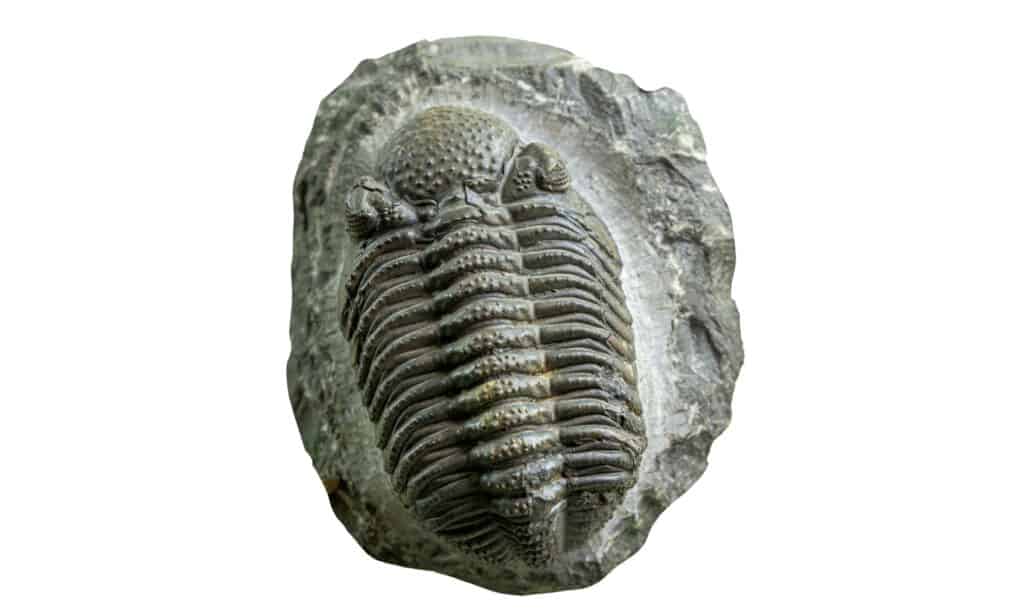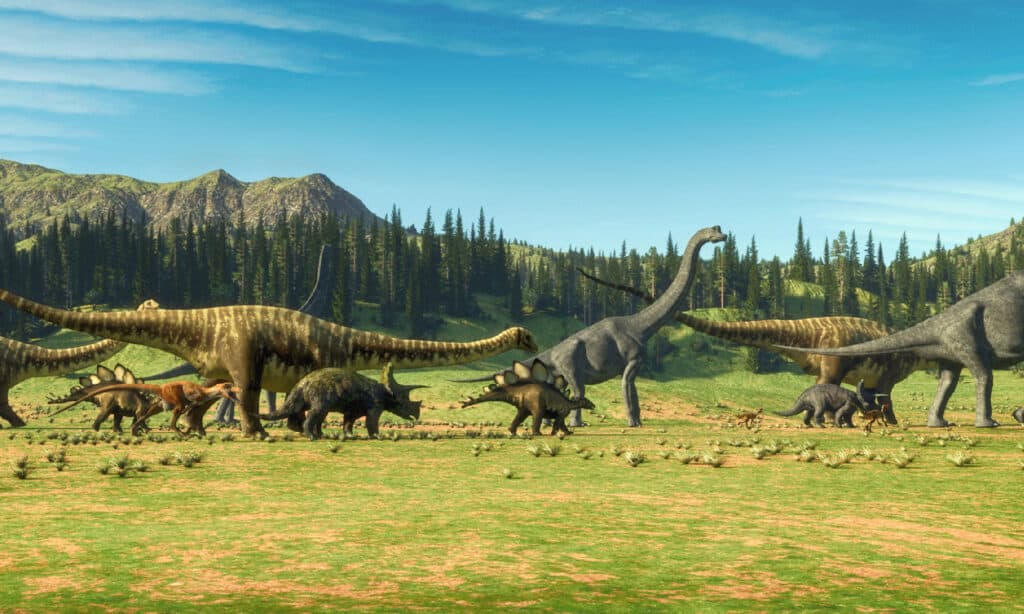Pennsylvania, commonly known as the “Coal State” or “Keystone State,” is a state in the Mid-Atlantic region in the northeast of the United States. The paleontology of this state spans from the Precambrian to the Quaternary. Although we acknowledge the significant role Pennsylvania’s biological diversity plays in supporting the US economy, there is much we don’t know about the prehistoric animals that lived in the state millions of years ago.
A shallow sea submerged the Keystone State early in the Paleozoic Era. This sea was inhabited by creatures like trilobites, graptolites, crinoids, bryozoans, and brachiopods. During the Mesozoic, the state provided habitat for all kinds of reptiles, leaving behind fossil evidence. Read on for more information on the extinct animals that lived in Pennsylvania.
6 Extinct Animals That Lived in Pennsylvania
Pennsylvania is famous for its numerous fossils of invertebrates, amphibians, dinosaurs, and non-dinosaur reptiles. The following are 6 extinct animals that called the Keystone State home.
1. Hynerpeton

Hynerpeton was a predator, primarily preying on small fish and insects.
©Nobu Tamura / CC BY-SA 3.0 – License
| Hynerpeton | |
|---|---|
| Kingdom | Animalia |
| Phylum | Chordata |
| Clade | Stegocephalia |
| Genus | Hynerpeton |
| Species | Hynerpeton bassetti |
| Living period | Late Devonian, about 365 to 363 million years ago |
Hynerpeton is an extinct four-limbed vertebrate that inhabited ponds and rivers of Pennsylvania during the Late Devonian. It was similar in appearance to other vertebrates such as Acanthostega and Ichthyostega. This species is considered the first true amphibian (an honor to which it may or may not be entitled).
Based on the size of the bones, it’s estimated that Hynerpetons could grow up to 2.3 feet in length. It had a smooth cleithrum that was expanded and slightly tilted forward on the upper portion, the same as true tetrapods. It had a very thin scapulocoracoid when seen from below and seemed large when seen from the side. Its shoulder socket was positioned on the outer and rear edge of the scapulocoracoid.
Hynerpeton was a predator, primarily preying on small fish and insects. It had tiny, sharp teeth that it used to hold the struggling prey, and then, while still alive, it swallowed its head first. Fossils suggest that Hynerpetons would wait on top of mud banks for potential prey to approach.
2. Rutiodon

Rutiodon belonged to a family of prehistoric reptiles that closely resembled crocodiles.
©Nobu Tamura (http://spinops.blogspot.com) / CC BY-SA 3.0 – License
| Rutiodon | |
|---|---|
| Kingdom | Animalia |
| Phylum | Chordata |
| Class | Reptilia |
| Clade | Pseudosuchia |
| Order | Phytosauria |
| Family | Parasuchidae |
| Subfamily | Mystriosuchinae |
| Genus | Rutiodon |
| Living period | Late Triassic Period, between 251 and 200 million years ago |
Rutiodon is an extinct phytosaur from the Late Triassic period. It belonged to a family of prehistoric reptiles that closely resembled crocodiles. However, unlike crocodiles, Rutiodon’s nostrils were positioned far back on the head, closer to the eyes, instead of at the snout’s tip.
Its front teeth were also enlarged and had a typically narrow jaw, suggesting that this predator may have probably caught fish or even seized land animals from the waterside. This species could grow up to 10 to 26 feet in total length, making it one of the largest carnivorous animals in its ecosystem.
Rutiodon fossils have been discovered in North Carolina, New Jersey, and Pennsylvania. Many hypotheses regarding Rutiodon extinction have been proposed, including sea-level rise, sea-level fall, global warming, global cooling, and meteorites. However, no conclusive evidence has yet supported a single hypothesis in particular.
3. Fedexia

Fedexia is an extinct prehistoric amphibian that lived during the Late Carboniferous period.
©NobuTamura / CC BY-SA 3.0 – License
| Fedexia | |
|---|---|
| Kingdom | Animalia |
| Phylum | Chordata |
| Class | Amphibia |
| Order | Temnospondyli |
| Family | Trematopidae |
| Genus | Fedexia |
| Living period | About 300 million years ago |
Fedexia is an extinct prehistoric amphibian that lived during the Late Carboniferous period, about 300 million years ago. It’s named after the shipping service FedEx since its fossils were discovered near a Federal Express depot at Pittsburgh International Airport in 2004. Fedexia was identified as tramatopid because of its elongated and subdivided external naris and large palatal tusks.
Fedexia had a tall, arching lateral profile skull, unlike other tramatopids that had a lower, straighter profile. This species probably subsisted on bugs and other small mammals of the Late Carboniferous.
4. Phacops

Some species of Phacops can camouflage themselves in different environments.
©iStock.com/dmitriymoroz
| Phacops | |
|---|---|
| Kingdom | Animalia |
| Phylum | Arthropoda |
| Class | Trilobita |
| Order | Phacopida |
| Family | Phacopidae |
| Genus | Phacops |
| Living period | Late Ordovician until the end of Devonian |
Phacops is the official state fossil of Pennsylvania. It’s an extinct genus of trilobites that lived in North and South America, northwestern Africa, China, and Europe from the Late Ordovician until the end of the Devonian. It was typically a rounded animal with a globose head and large schizochroal eyes.
Phacops could roll up into a well-protected armored ball when threatened. Some species of Phacops can camouflage themselves in different environments. Sadly, these creatures went extinct during the Permian-Triassic extinction event, about 250 million years ago, which killed over 90% of the species on Earth.
5. Hypsognathus

Hypsognathus was among the few reptiles to survive the Permian-Triassic extinction event.
©Nobu Tamura / CC BY-SA 4.0 – License
| Hypsognathus | |
|---|---|
| Kingdom | Animalia |
| Phylum | Chordata |
| Class | Reptilia |
| Clade | Parareptilia |
| Order | Procolophonomorpha |
| Family | Procolophonidae |
| Subfamily | Leptopleuroninae |
| Genus | Hypsognathus |
| Living period | Late Triassic, approximately 237 to 201.3 million years ago |
Hypsognathus was among the few reptiles to survive the Permian-Triassic extinction event. It was similar in appearance to modern lizards, though the two species were unrelated. Hypsognathus could grow up to 13 inches in length. It’s thought that this species was an herbivore since it had broad teeth. It had a relatively broad body with a short tail.
Hypsognathus had some spikes on its head, probably for protection. This creature went extinct at the end of the Triassic. Today, the only surviving anapsid reptiles on Earth are terrapins, tortoises, and turtles.
6. Dinosaur

Dinosaurs were a diverse group of extinct reptiles that thrived during the Mesozoic Era.
©iStock.com/Orla
| Dinosaur | |
|---|---|
| Kingdom | Animalia |
| Phylum | Chordata |
| Clade | Dracohors |
| Clade | Dinosauria |
| Living period | About 245 to 66 million years ago |
Dinosaurs were a diverse group of extinct reptiles that thrived during the Mesozoic Era. This era included three consecutive geological periods; the Triassic, Jurassic, and Cretaceous periods. Dinosaurs went extinct 66 million years ago. Based on fossil records and analysis, it’s believed that birds are feathered dinosaurs that evolved from earlier theropods during the Late Jurassic period. Therefore, dinosaurs are divided into avian dinosaurs and extinct non-avian dinosaurs.
Most dinosaurs, described as archosaurs, had an erect hind limb posture. This was a general characteristic of true dinosaurs. Other groups that were popularly conceived as dinosaurs but were not taxonomically classified as dinosaurs include plesiosaurs, ichthyosaurs, mosasaurs, pterosaurs, and Dimetrodon.
The photo featured at the top of this post is © Daniel Eskridge/Shutterstock.com
Thank you for reading! Have some feedback for us? Contact the AZ Animals editorial team.







